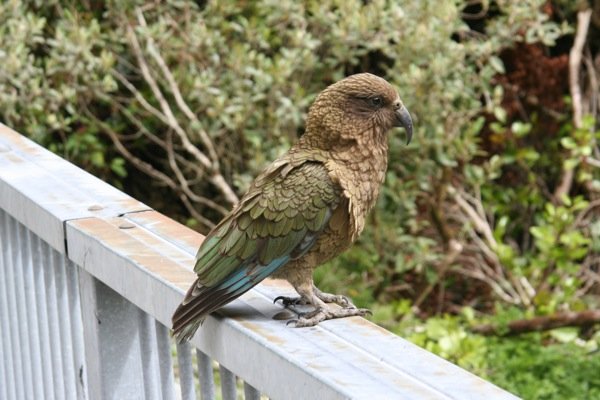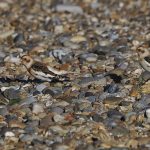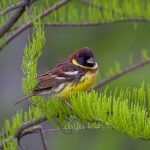
No Kea were harmed in the making of this story. (Image by Duncan)
Much has been made in these pages about the havoc that feral cats wreak on native birds. Just yesterday, Mike reported on a study finding that they are responsible for decimating populations of Hawaiian Petrels. And the TNR/exterminate debate rages on. (Maybe Daleks could be trained to focus on feral cats?)
A possible solution may be hidden in recent news from New Zealand. An abandoned kitten nicknamed Frankie had staked out a McDonald’s restaurant as its feeding grounds, and for more than a year, subsisted mainly on handouts from employees and customers. A kindhearted SPCA worker took Frankie off the streets (or, rather, out of the carpark) and helped him adjust to more traditional cat food.
While an all-junk food diet isn’t advised for anyone, it’s especially rough on cats, preventing them from getting vital nutrients; Frankie had health problems that, with a switch to healthy food, seem to have abated. But, as the penultimate paragraph of the story states, chowing down on all those Big Macs and fries meant that he didn’t have much interest in preying on birds. (Except, possibly, for Chicken McNuggets.) Hey bird lovers, maybe getting feral cats addicted to fast food is an idea worth considering!













Here’s an even better diet:
I think I found a perfect and 100% natural solution for those who don’t want to take more direct and more effective measures against free-roaming invasive species cats. Anyone who has criminally irresponsible cat-lovers in their area need only plant lilies on their properties. Cat-lovers always want their more responsible neighbors to grow plants around the perimeter of their properties that will repel their cats for them (from the cat-owners’ own criminally negligent and criminally irresponsible behaviors and values). Well now you can brighten up your yard AND repel cats naturally! — PERMANENTLY
Google for: lily toxicity cats
It has been reported that a cat even licking a little bit of Lily pollen from their fur will be fatal in short order. A cat even drinking some of the water in which a bunch of lilies has been kept is also fatal to them.
Everyone happy! You get to have the kinds of plants that you want, they get to have the kind of pets that they want — if they take care of it like any responsible grown-up would. Or are cat-lovers now going to demand that you can’t plant flowers on your own property? That would be their next and usual move, wouldn’t it.
A perfectly natural solution to an invasive species animal that didn’t evolve with lilies around. Plus it’s a good incentive plan for cat-lovers to finally educate themselves all about ecology, native species, and evolution. 🙂
Doing a little research on ASPCA’s toxic plants lists (Family: Liliaceae).
Lilies (Lilium species) that are deadly toxic to cats ONLY, in even small quantities (even the pollen will do):
Asian Lily (Asiatic Lily) | Scientific Name: Lilium asiatica
Easter Lily | Scientific Name: Lilium longiflorum
Red Lily | Scientific Name: Lilium umbellatum
Rubrum Lily** | Scientific Name: Lilium speciosum cultivar
Stargazer Lily** | Scientific Name: Lilium orientalis
Tiger Lily** | Scientific Name: Lilium tigrinum
Wood Lily | Scientific Name: Lilium umbellatum
(not of the Lilium species)
Orange Day Lily | Scientific Name: Hemerocallis graminea
(** see notes below)
Lilies (Lilium species) that may be toxic to dogs if the dog ingests enough:
[NONE]
Be sure they are from the Liliacea Family, has “Lilium” on the plant label or are common N. American Day Lilies. Many plants with “Lily” in the common-name are not of the “Lilium” species, and are in fact toxic to other species of animals besides cats. Double check. On further investigation I also found out that all plant-parts, the blossoms and pollen being the most toxic, if harvested and dried (for year-round use) are just as deadly toxic to cats (if not more-so because of the unknown toxin being concentrated), and the drying makes them even more palatable to cats. What a great mulch for gardens! (Or powdered spice for a special outdoor can of tuna.)
**There have been some anecdotal reports of some free-roaming cats that have spent many years around some of these particular species of plants and still survived. So it is best to harvest, dry, and grind-up the plants and mix them into any appropriate bait-foods to be most effective.